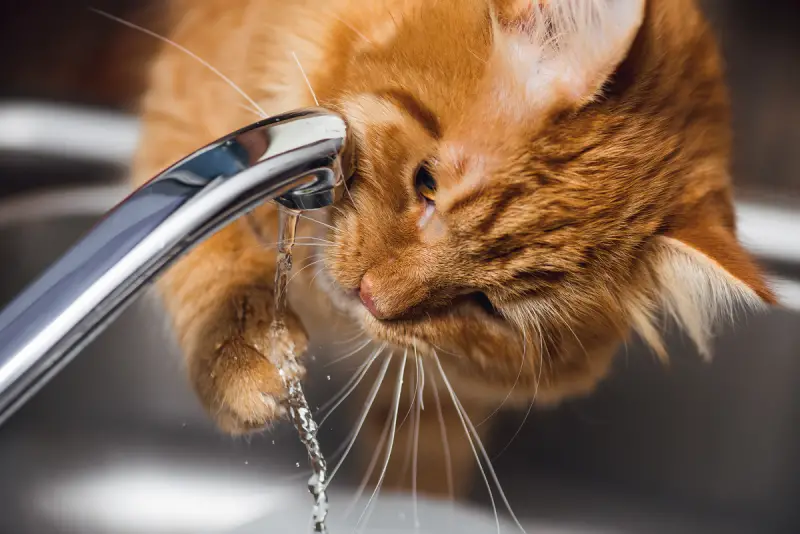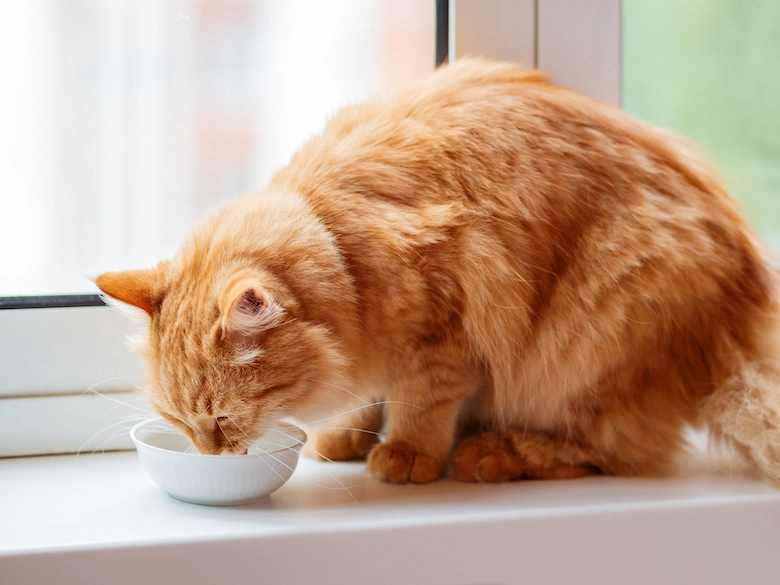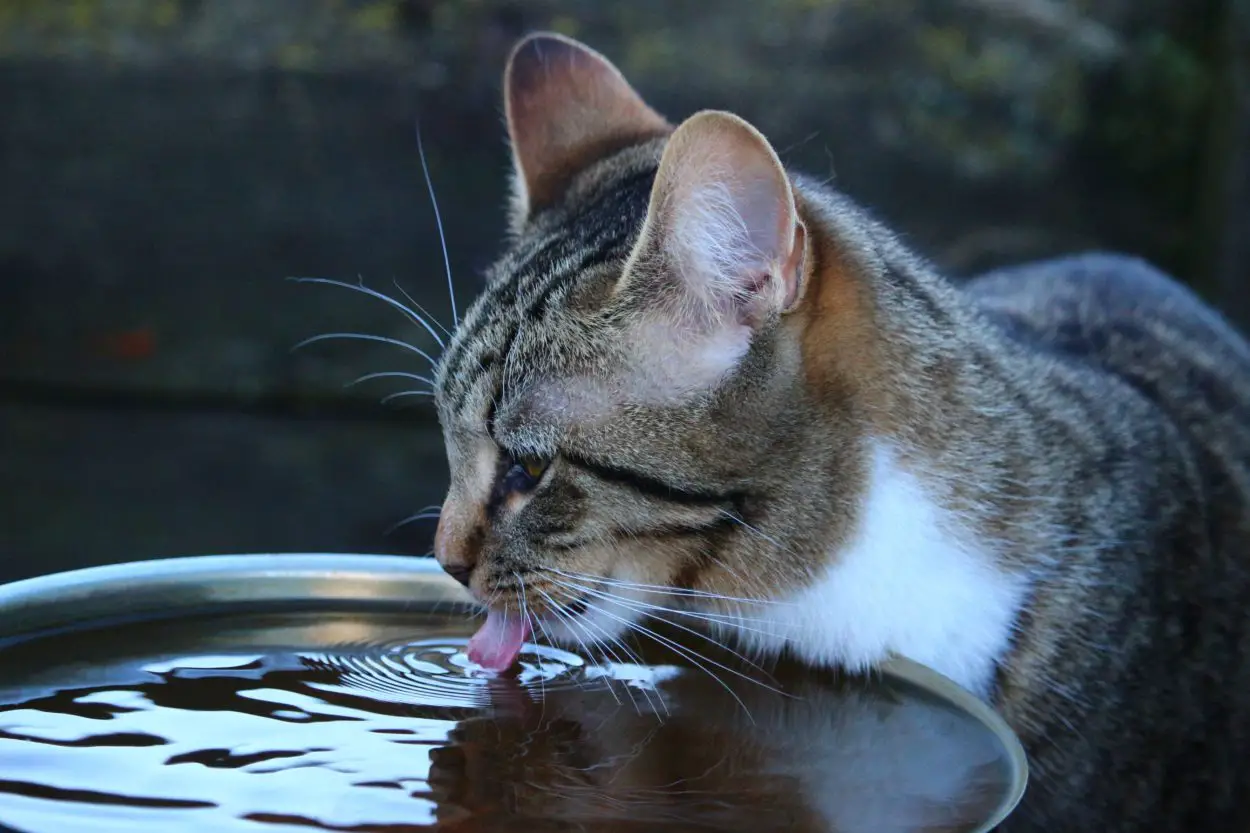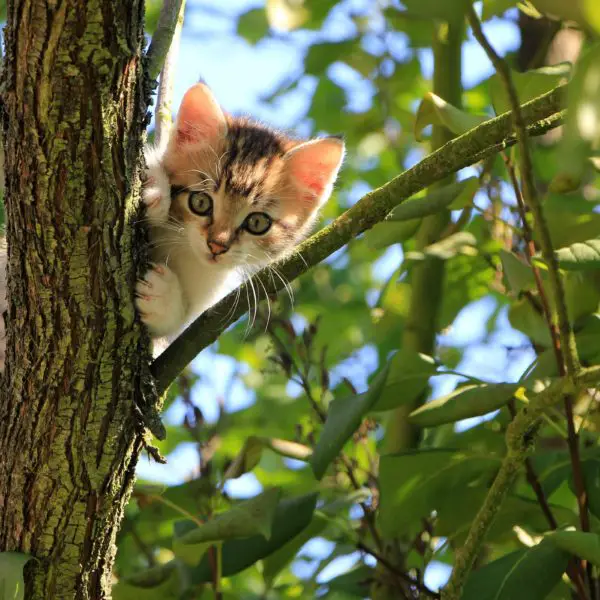Getting my cat to drink more water has really been a complicated process. I have tested so many different tricks and tips and most of them simply didn’t work.
Is it normal for cats to love eating but not like drinking water? How long can a cat really survive without drinking, and what can we do to encourage our pets to drink more?
My Cat Won’t Drink Water But Eats
If you’ve noticed your cat doesn’t want to drink but is gladly eating food, you shouldn’t have a hard time getting your cat to drink a little extra water.
One of the ways I get my cat to drink more water is by simply putting the required extra amount into her food bowl, mixing a bit of water with her food, or giving her wet cat food.
However, if your cat is refusing to drink water there might be a medical problem causing it, requiring immediate veterinary attention. If this is the case, do not wait for an appointment but make sure to go to your veterinarian – immediately. Sometimes, especially in older cats, things like failing kidneys or diabetes can cause your cat to avoid drinking water.
Most importantly – it doesn’t matter as much if your cat is eating or not; the lack of fluids is an immediate problem.
Food and water are not interchangeable and your cat will begin to suffer in a day or less of not drinking water.
The amount of water your cat drinks may also depend on the type of diet you are feeding her with, and may depends on other factors ranging from how old your cat, what breed of cat we’re talking about, to what the type climate zone you’re in.
There are many different reasons why most cats don’t like water.
Believe it or not, while domestic cats maternal ancestors would sometimes go for several days without a meal – but they couldn’t survive without drinking water. While they adapted in dry, arid regions where there they didn’t have to develop relationship with water, it was still important for their survival to drink water, as is for all animals.

How To Tell If Your Cat Is Dehydrated
You may have heard the saying that when you are thirsty it’s already too late because your body is running on a deficit.
With cats, its completely the same except the fact that they cannot tell us whether or not they are thirsty. This is why your cat should always have access to fresh water.
Make sure you always leave your cat a bowl of water next to her food as it will always be an opportunity for her to drink some water and know where to get easily get it. Also, always make sure to replace that water with fresh, new water every time you feed your cat.
Causes Of Dehydration In Cats
The first major cause of dehydration is from a reduced amount of the proper fluid that your cat needs to remain healthy. Just like you, pets take in these fluids to maintain hydration through out their body, and not just their cells.
The second cause of dehydration in cats is almost always from an illness. The most common illnesses that will cause dehydration are kidney disease, vomiting, or diarrhea. Kidney disease usually causes a gradual loss of body fluids, while vomiting and diarrhea will cause fluids to be lost very rapidly and in very large amounts.
It is crucial for you to monitor your cats body and their fluid loss during this type of an illness to prevent it from becoming an emergency situation. Watching the symptoms very closely can help to prevent it from becoming an emergency situation.
Symptoms Of Dehydration In Cats
Real dehydration is a stage that comes after thirstiness with a variety of symptoms that you need to look out for, especially during the summer.
Water is a large component of blood and without enough of it, cats blood vessels would begin to constrict, forcing blood closer to her internal organs, which need all the oxygen they can get to survive.
Loss Of Skin Elasticity
In a normal and very healthy cat, if you gently pull on your cat’s skin, it should immediacy fall back to its normal position and there will be no resistance or hesitation. If your cat is starting to become dehydrate at a point that is considered moderate, there will be a definite delay in this fall back position. This is true for both humans and cats.
Dry Gums And Sunken Eyes
Dry gums and sunken eyes are very common and will show you your cat is starting to lose a significant amount of body fluid, often accompanied by bad breath.
Lethargy And Dizziness/Depression
The lack of fluids will cause your cat a lot of stress and her cells will signal her brain for some type of help. This ranges from abnormal amounts of sleepiness, low energy, and lack of response to surroundings.
A Decrease In Appetite
Dehydrated cats tend to lose much of their appetites for eating because of their lack of energy, which will negate any electrolytes and moisture content that is normally achieved from food.
Vomiting And Diarrhea
Vomiting and diarrhea can affect your cat by causing extreme fluid loss, leading to dehydration and electrolyte disturbances and/or acid-base imbalances. For most cats, it often become so bad that in about 90% of untreated cases they die of dehydration.
How Long Does It Take For A Cat To Recover From Dehydration?
How long for a cat to recover from dehydration depends on how dehydrated the cat is, her size, and the method of rehydration if her condition is severe.
In order to rehydrate, your cat needs to be provided with a constant source of freshwater. Your cat has to be willing to drink the water for this to do anything, and the amount of time for rehydration depends on the level of dehydration, the functioning of kidneys (and other organs), and so on.
After a cat drinks water, it is absorbed by the small intestine and goes mainly into the bloodstream. On an empty stomach, water absorption tend to be faster, but still much slower than direct intravenous injection.

A Subcutaneous Injection
Sometimes veterinarians will inject normal saline directly below the skin (Sub-Q) in cases of mild dehydration, and this is known as a subcutaneous injection (also known as SC, SQ, sub-cu, sub-Q, SubQ, or subcut).
The fluids will form a kind of ‘hump’ before slowly dispersing into surrounding tissues.
Fluids given a subcutaneous injection are not meant to treat severe dehydration and are in most cases prescribed as a home treatment.
“Most commonly, home fluid therapy is recommended for cats with kidney disease or chronic kidney disease (also known as chronic renal failure). Fluids can be given as often as once a day or less frequently to meet the cat’s fluid needs.”
Dr. Ann Hohenhaus
An Intravenous Injection
An intravenous injection is a medical technique that delivers a liquid directly into a person’s vein.
The major idea behind this is that an saltwater solution about the same ph as blood injected straight into the bloodstream, and in turn it increase circulatory volume – a primary treatment for dehydration.
Because saline is a sodium solution, it will help replenish all the lost electrolytes at the same time as helping to rehydrate your cat. The rate of absorption with an intravenous injection will depend on how dehydrated your cat is, but the drip rate on your it’s bag can be set.
Unlike the treatment above, this would be nearly impossible for an average cat owner to do at home, and needs to be done by a trained medical professional.
Can I Flavor My Cat’s Water?
Normally, most cats like fresh water that tastes like water. Unusual taste can signify a problem and they may not want to drink it.
If you want to try adding flavor, add something that resembles an animal source. You might add about a teaspoon of cooked beef, fish or chicken broth, but don’t add too much as it is high in sodium.
Think about the flavors that your cat really enjoys and add them in liquid or powder form.
This way you can ensure that your pet must drink in order to consume the flavor.
13 Tricks To Get Your Cat To Drink Water
Below, I have compiled a list below of tips and tricks that will get your cat to drink more water. I have tried all of them and some might work better than others. Only through trial and error you will find what works best for your individual cat.
- 1) Give your cat wet food. Wet canned food, as opposed to dry cat kibble, has much higher water content.
- 2) Try offering water from your cupped hands. The fact that you are offering it may increase the water’s value.
- 3) Give your cat frozen ‘ice/broth’ treats.
- 4) Make a tasty ‘cat smoothie’ with a small amount of yogurt and fruits like bananas and blueberries.
- 5) Flavor your cat’s water with a little bit of broth or lactose-free milk. We use green-lipped mussel powder as a supplement which also has an enticing smell to it.
- 6) Feed your cat fruits and vegetables that are rich in water such as watermelon, cucumber, and strawberries.
- 7) Keep a clean stainless steel water bowl constantly filled with fresh, cool, clean water twenty-four hours a day.
- 8) Add a lot of water to your cat’s kibble.
- 9) Make sure your cat’s water bowl is larger than the food bowl.
- 10) Freeze a water/broth or peanut butter mixture into a tasty treat that will also rehydrate your cat.
- 11) Avoid foods high in salt content, or anything else that is high in salt content. Even though sodium is integral for many of the body’s functions, it can also speed dehydration and too much can be very bad for a dehydrated cat.
- 12) Add treats to the water bowl. Your cat is forced to swallow some water when fishing for the treat.
- 13) Feed you cat with raw diets that are naturally higher in moisture content and will provide her with significantly more fluids during normal meals.
Should I Give My Cat Full Access To Water?
The answer to the question if your cat should always have access to water is absolutely yes.
While you generally don’t want constant access to food because it is important to establish a regular feeding routine and avoid weight gain problems, amongst many other reasons, your cat should have constant access to fresh, clean, cool water.
You might be trying to potty train your cat and some might limit the water at night, but it is better to set a schedule for bathroom breaks.
If you have a cat that’s constantly following you into the bathroom because the cat’s litter is in it, or for other reasons, make sure to keep the doors open!
Young kittens will have small bladders and need potty breaks frequently anyway.
If you don’t want to or can’t offer a constant source of freshwater, offer your cat water several times throughout the day.
How Long Can Cats Go Without Drinking?
Cats absolutely have to remain hydrated, just like humans. Water is necessary to sustain life and is even more vitally important than food.
A cat not drinking isn’t a good sign, and all cat should be drinking water daily. Just like us, a cat without water won’t survive long.
Similarly, if your cat is not drinking for prolonged periods of time, it may cause very problematic constipation problems.
Whereas a cat might last longer without food, they can survive just around 3 days without any water.
If it is hot outside or your cat has specific health conditions, this time would decrease.
How Much Water Should Cats Drink?
Compared to humans, cats drink relatively little water. But that does not mean they do not need water.
In general, for every pound of body weight, a cat should have at least an ounce or more of water daily.
For a broader overview , cats need between 3.5–4.5 ounces of water per 5 pounds of body weight per day. If you have a cat with 10 pounds, they should be taking in between 7–9 ounces of water which is about half an average bottle of water.
A can of wet food is typically about 70–80% water. If your cat is eating wet food, they might get between 3.85–4.4 ounces of water from a single can – half their daily water requirements right there.


Leave a Comment